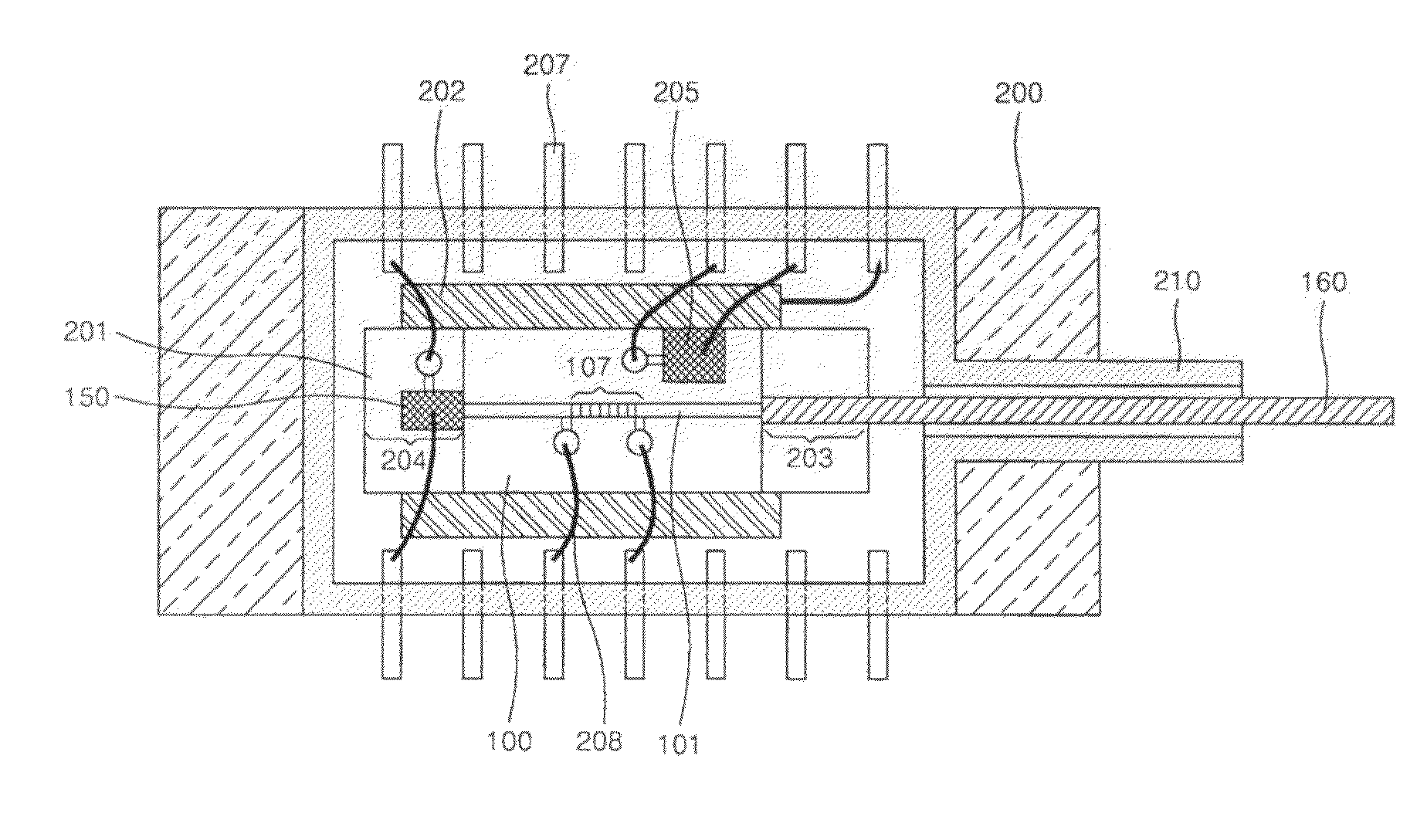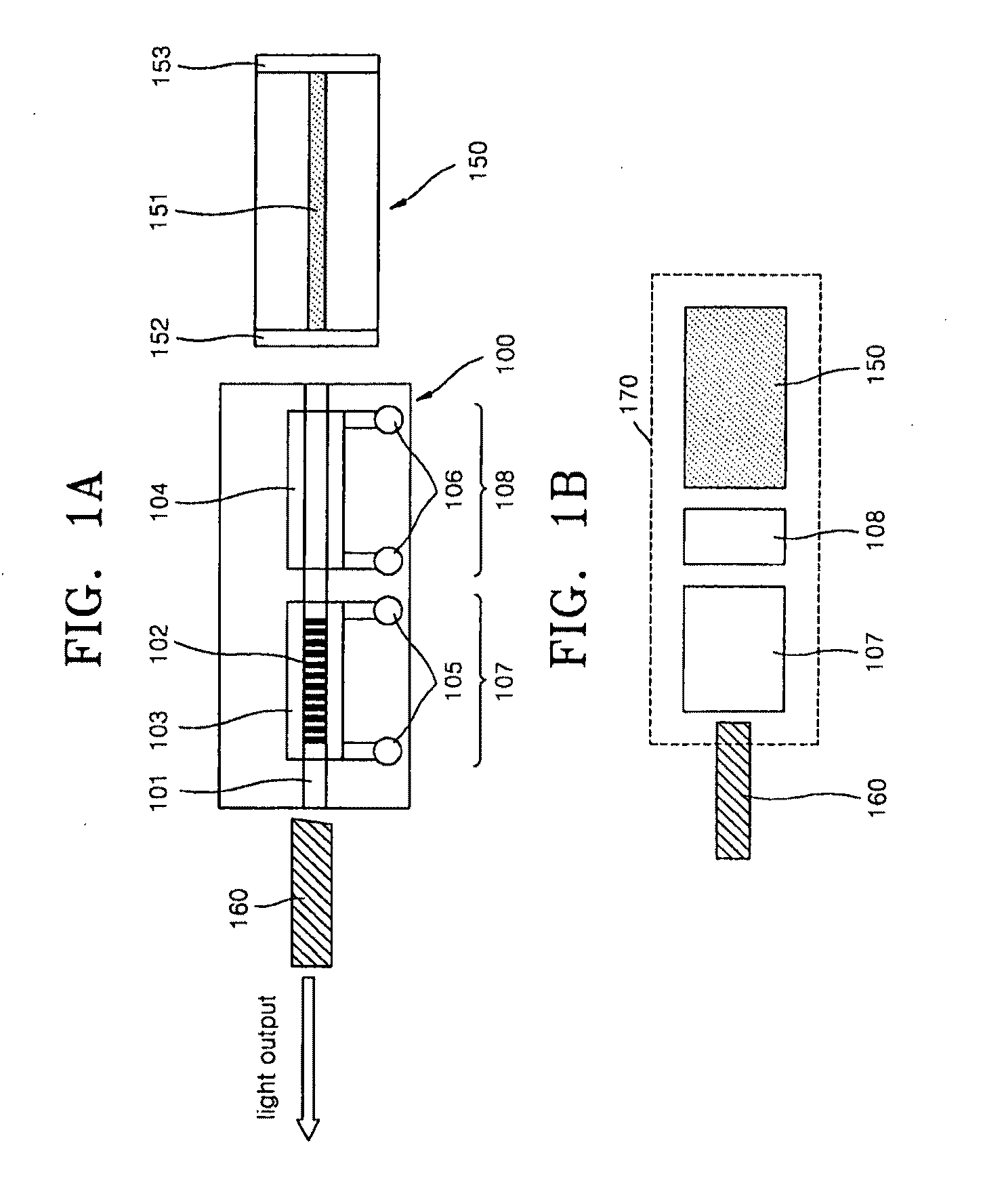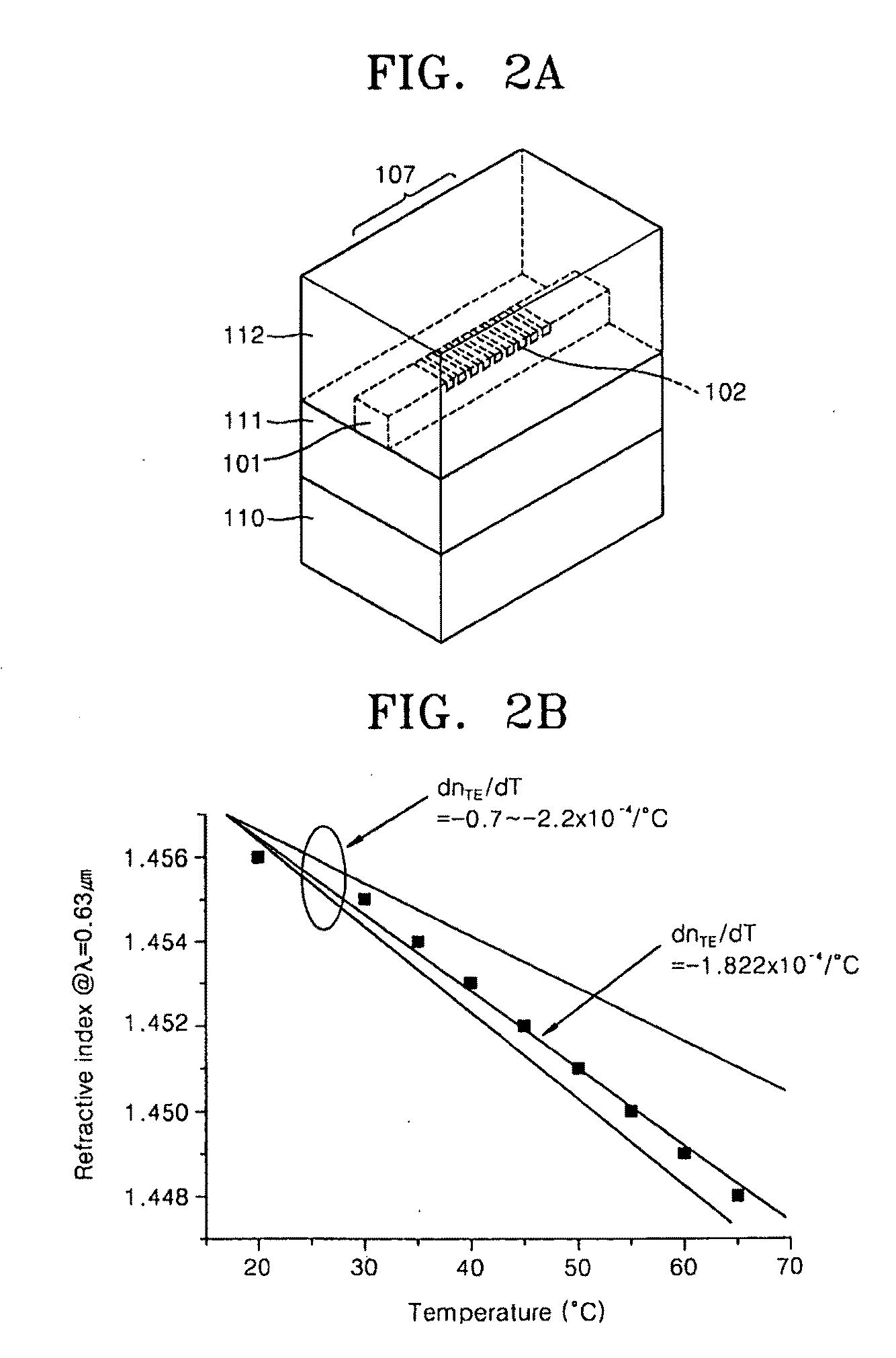Planar lightwave circuit (PLC) device wavelength tunable light source comprising the same device and wavelength division multiplexing-passive optical network (wdm-pon) using the same light source
- Summary
- Abstract
- Description
- Claims
- Application Information
AI Technical Summary
Benefits of technology
Problems solved by technology
Method used
Image
Examples
Embodiment Construction
Technical Problem
[0024]To solve the above and / or other problems, in the manufacture and application of a PLC-ECL type wavelength tunable light source, the present invention provides a wave length tunable mechanism with improved performance and stability, a light source with improved packaging and mass productivity prospects, and a light source applied to a WDM-PON with initialization and stabilization functions.
[0025]In detail, first, in relation to the improvements of the performance and stability of a wavelength tunable mechanism, the present invention provides the structure of a PLC device which can reduce the temperature gradient between the upper and lower areas of the optical waveguide core layer, improve mechanical stability of a thin film metal heater, and reduce power consumption.
[0026]Second, in relation to the improvements of packaging and mass productivity of a wavelength tunable light source, the present invention provides the structure of a wavelength tunable light sou...
PUM
 Login to View More
Login to View More Abstract
Description
Claims
Application Information
 Login to View More
Login to View More - R&D
- Intellectual Property
- Life Sciences
- Materials
- Tech Scout
- Unparalleled Data Quality
- Higher Quality Content
- 60% Fewer Hallucinations
Browse by: Latest US Patents, China's latest patents, Technical Efficacy Thesaurus, Application Domain, Technology Topic, Popular Technical Reports.
© 2025 PatSnap. All rights reserved.Legal|Privacy policy|Modern Slavery Act Transparency Statement|Sitemap|About US| Contact US: help@patsnap.com



